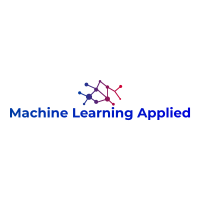Quantocracy: This is a curated mashup of quantitative trading links.
Review of Parameter Tuning Methods for Nature-Inspired Algorithms – Geethu Joy, Christian Huyck, Xin-She Yang
Almost all optimization algorithms have algorithm-dependent parameters, and the setting of such parameter values can largely influence the behaviour of the algorithm under consideration. Thus, proper parameter tuning should be carried out to ensure the algorithm used for optimization may perform well and can be sufficiently robust for solving different types of optimization problems. This chapter reviews some of the main methods for parameter tuning and then highlights the important issues concerning the latest development in parameter tuning. A few open problems are also discussed with some recommendations for future research.
Reinforcement Learning-assisted Evolutionary Algorithm: A Survey and Research Opportunities – Yanjie Song, Yutong Wu, Yangyang Guo, Ran Yan, P. N. Suganthan, Yue Zhang, Witold Pedrycz, Yingwu Chen, Swagatam Das, Rammohan Mallipeddi, Oladayo Solomon Ajani
Evolutionary algorithms (EA), a class of stochastic search methods based on the principles of natural evolution, have received widespread acclaim for their exceptional performance in various real-world optimization problems. While researchers worldwide have proposed a wide variety of EAs, certain limitations remain, such as slow convergence speed and poor generalization capabilities. Consequently, numerous scholars actively explore improvements to algorithmic structures, operators, search patterns, etc., to enhance their optimization performance. Reinforcement learning (RL) integrated as a component in the EA framework has demonstrated superior performance in recent years. This paper presents a comprehensive survey on integrating reinforcement learning into the evolutionary algorithm, referred to as reinforcement learning-assisted evolutionary algorithm (RL-EA). We begin with the conceptual outlines of reinforcement learning and the evolutionary algorithm. We then provide a taxonomy of RL-EA. Subsequently, we discuss the RL-EA integration method, the RL-assisted strategy adopted by RL-EA, and its applications according to the existing literature. The RL-assisted procedure is divided according to the implemented functions including solution generation, learnable objective function, algorithm/operator/sub-population selection, parameter adaptation, and other strategies. Finally, we analyze potential directions for future research. This survey serves as a rich resource for researchers interested in RL-EA as it overviews the current state-of-the-art and highlights the associated challenges. By leveraging this survey, readers can swiftly gain insights into RL-EA to develop efficient algorithms, thereby fostering further advancements in this emerging field.
Hyperbolic Random Forests – Lars Doorenbos, Pablo Márquez-Neila, Raphael Sznitman, Pascal Mettes
Hyperbolic space is becoming a popular choice for representing data due to the hierarchical structure – whether implicit or explicit – of many real-world datasets. Along with it comes a need for algorithms capable of solving fundamental tasks, such as classification, in hyperbolic space. Recently, multiple papers have investigated hyperbolic alternatives to hyperplane-based classifiers, such as logistic regression and SVMs. While effective, these approaches struggle with more complex hierarchical data. We, therefore, propose to generalize the well-known random forests to hyperbolic space. We do this by redefining the notion of a split using horospheres. Since finding the globally optimal split is computationally intractable, we find candidate horospheres through a large-margin classifier. To make hyperbolic random forests work on multi-class data and imbalanced experiments, we furthermore outline a new method for combining classes based on their lowest common ancestor and a class-balanced version of the large-margin loss. Experiments on standard and new benchmarks show that our approach outperforms both conventional random forest algorithms and recent hyperbolic classifiers.
Policy Diversity for Cooperative Agents – Mingxi Tan, Andong Tian, Ludovic Denoyer
Standard cooperative multi-agent reinforcement learning (MARL) methods aim to find the optimal team cooperative policy to complete a task. However there may exist multiple different ways of cooperating, which usually are very needed by domain experts. Therefore, identifying a set of significantly different policies can alleviate the task complexity for them. Unfortunately, there is a general lack of effective policy diversity approaches specifically designed for the multi-agent domain. In this work, we propose a method called Moment-Matching Policy Diversity to alleviate this problem. This method can generate different team policies to varying degrees by formalizing the difference between team policies as the difference in actions of selected agents in different policies. Theoretically, we show that our method is a simple way to implement a constrained optimization problem that regularizes the difference between two trajectory distributions by using the maximum mean discrepancy. The effectiveness of our approach is demonstrated on a challenging team-based shooter.



